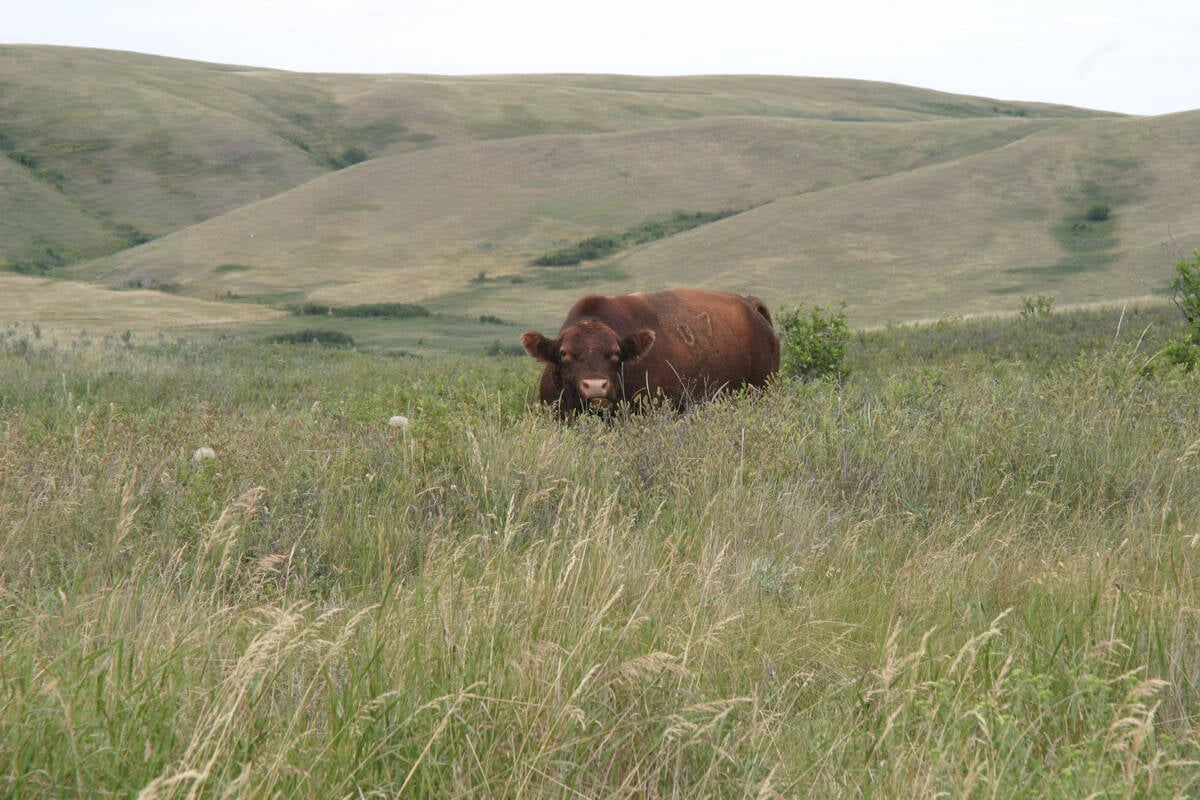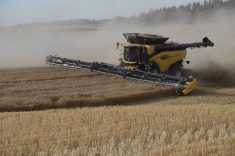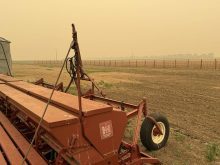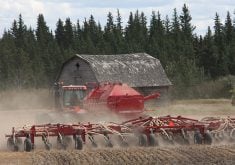Hog producers who have either gone out of business or are in danger of that fate are outraged that the Saskatchewan government is propping up the province’s largest hog operation with a sizable loan.
The Western Producer has learned that Victoria Park Capital, the company that manages the assets of Investment Saskatchewan, has approved a $3.7 million loan to Big Sky Farms Inc.
Saskatchewan enterprise and innovation minister Lyle Stewart said the commitment has been made but the money had not been dispersed as of April 23.
Read Also

Saskatchewan puts crown land auction on hold
Auctions of Saskatchewan crown lease land are once again on hold.
He expected some part of the loan would be made available to Big Sky in the near future.
|
_____ CORRECTION _____
This story originally stated Stomp Pork had closed. In fact, Stomp Pork continues to operate under bankruptcy protection. |
“I’m pleased with Victoria Park Capital’s decision not to let the thing fold. We don’t want the taxpayers to lose their investment,” said Stewart, adding that the province wants to get out of the hog business as soon as the sector turns around and there is a buyer for their 62.9 percent share in Big Sky.
Vaughn Crone, a former hog farmer from the Moose Jaw, Sask., area, said he suspected the province must have been keeping Big Sky afloat because everybody else in the industry has been struggling, including Stomp Pork, Saskatchewan’s second largest operation, which filed for bankruptcy protection in April.
Crone said he is appalled that more government money is being funneled to Big Sky but he doesn’t blame the ruling Saskatchewan Party.
He points the finger squarely at the NDP, which through Investment Saskatchewan committed $17.3 million to Big Sky. Another $9.1 million was invested by Crown Life, which was partially owned by Investment Saskatchewan.
The Big Sky asset was worth $30.5 million on Investment Saskatchewan’s books as of Dec. 31, 2007, down $15 million from a year earlier.
“People need to remember what government stuck their nose in there in the first place and picked one person in an entire industry to survive,” said Crone.
Crone saw the writing on the wall and stopped repopulating his herd with sows in January 2007. On March 17, 2008, he shipped his last 44 sows, netting $76 for each 96 kilogram pig after paying the freight to Brandon.
“I’m totally out of pigs. A few spiders are in the barn now. Cobwebs are starting to form,” he said.
Big Sky founder Florian Possberg said he isn’t receiving special treatment from the province.
“That money coming in is of course at a very significant cost. It’s not free money,” he said.
His operation weans about 1.2 million hogs a year, which means the loan works out to $3.08 a hog. By comparison, the average producer is eligible for a non-repayable Canadian Agricultural Income Stabilization (CAIS) program payment of $30 per hog, while Big Sky is limited to $2.60 per hog through CAIS.
“The taxpayers are actually funding other producers to a higher extent than they are Big Sky Farms,” said Possberg.
The same goes for nearly every provincial and federal program. Cap restrictions limit the amount of money that larger producers can draw out of the programs.
“We’re a lot more exposed to the market than the average producer is,” said Possberg.
He said his company has stayed afloat while others are floundering because of a significant hedging program that has helped his business immensely and the widespread adoption of cost cutting measures, such as feeding pigs dried distillers grain.
John Germs, a hog producer from the Saskatoon area, isn’t far behind Crone in terms of exiting the industry.
For 32 years he ran a 250 sow farrow-to-finish operation. Today, he has 3,000 pigs remaining to go to market and is completely out of sows.
Germs was exasperated to hear that Big Sky is in line for a $3.7 million lifeline while his operation is drowning.
“How does anybody else compete against that?” he said. “Can we get some of that money? No.”
He said many small family-owned hog farms feel their operations were destined to fail because larger facilities were overproducing hogs.
“This is probably another example of the small getting out and never coming back and the big getting bigger,” said Germs.
Neil Ketilson, general manager of Sask Pork, said Possberg is facing undue criticism for being an innovative and aggressive businessperson.
He wonders why other producers didn’t approach Investment Saskatchewan.
“If you don’t ask, you don’t get,” he said.
Ketilson is relieved that Possberg has been able to keep his company afloat through sound management practices.
“I don’t think these smaller guys appreciate the significant role these larger players make in providing all the infrastructure that supports the entire industry.”
He said that without Stomp Pork, which has closed, and Big Sky, there would have been no SPI Marketing Group Inc., the now closed Mitchell’s Gourmet Foods slaughter plant, or the quality and quantity of hog researchers and veterinarians in the province because there wouldn’t have been the hog numbers to support such resources.
“I hate to see the internal bickering and pointing fingers at one another because, quite frankly, I don’t think it’s constructive,” said Ketilson.















